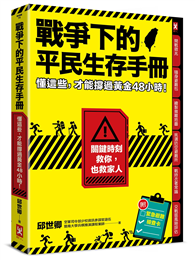In an emergency the collection, treatment and disposal/reuse of human waste is critical to the health, wellbeing and environment of affected populations. Addressing this is difficult and complex requiring an understanding of the technical, social, institutional, political and environmental issues affecting the situation. In large emergencies where international relief agencies are involved there usually will be specialists available to advise and assist inexperienced field staff deliver essential services. However, most emergencies are not large. They are local in nature and rely on local officials to provide an emergency response, especially in the early stages of the emergency. It is very likely that these officials will have minimal knowledge and experience of emergency response, indeed they have probably never been faced with such an event before.
This book sets out to assist such individuals. Working from a technical perspective, it provides an understanding of the critical elements controlling the delivery of human waste related services, together with strategies for decision making and guidance on how to design, construct and operate key infrastructure. The book concentrates on the acute response and stabilization phases of an emergency - but much of the content is equally relevant to the long term and rehabilitation phases.
| FindBook |
有 1 項符合
Sanitation in Humanitarian Settings的圖書 |
 |
Sanitation in Humanitarian Settings 作者:Reed 出版社:Practical Action Publishing 出版日期:2024-02-29 語言:英文 規格:平裝 / 392頁 / 普通級/ 初版 |
| 圖書館借閱 |
| 國家圖書館 | 全國圖書書目資訊網 | 國立公共資訊圖書館 | 電子書服務平台 | MetaCat 跨館整合查詢 |
| 臺北市立圖書館 | 新北市立圖書館 | 基隆市公共圖書館 | 桃園市立圖書館 | 新竹縣公共圖書館 |
| 苗栗縣立圖書館 | 臺中市立圖書館 | 彰化縣公共圖書館 | 南投縣文化局 | 雲林縣公共圖書館 |
| 嘉義縣圖書館 | 臺南市立圖書館 | 高雄市立圖書館 | 屏東縣公共圖書館 | 宜蘭縣公共圖書館 |
| 花蓮縣文化局 | 臺東縣文化處 |
|
|
圖書介紹 - 資料來源:博客來 評分:
圖書名稱:Sanitation in Humanitarian Settings
內容簡介
|











